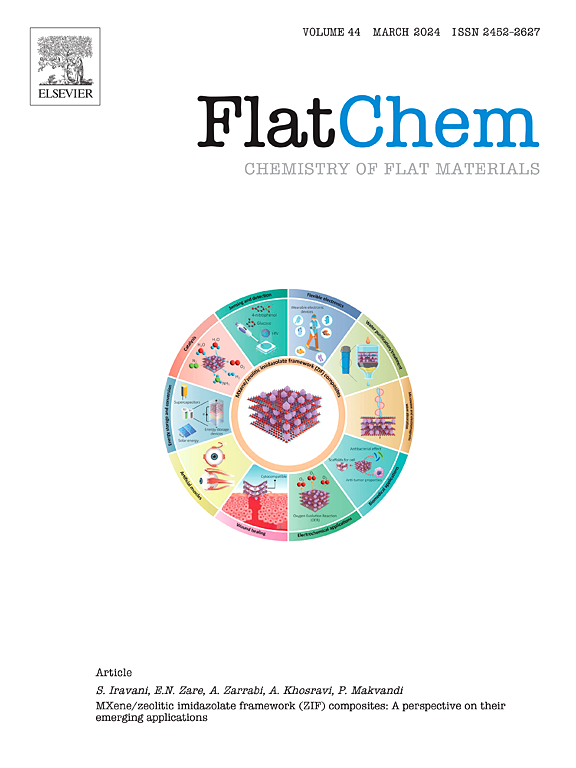过渡金属(Ag 和 Au)修饰 CrS2 单层的吸附和气体传感特性:DFT 研究
IF 6.2
3区 材料科学
Q2 CHEMISTRY, PHYSICAL
引用次数: 0
摘要
实时监测锂电池热失控产生的气体是提高其安全性的一种方法。本文利用第一原理计算分析了锂电池热失控气体在 CrS2 单层上的吸附情况。研究了指定气体与 Ag 和 Au 负载 CrS2 之间吸附结构的吸附能、能带、态密度、电荷转移和恢复时间。比较吸附参数后发现,掺杂过渡金属后,目标气体的吸附能力明显增强。在传感性能方面,Ag 和 Au 对基底的修饰作用也通过状态密度和恢复时间得到了验证。这项研究为开发新型气体传感器提供了理论依据,该传感器可检测锂电池热失控过程中产生的气体。本文章由计算机程序翻译,如有差异,请以英文原文为准。

The adsorption and gas-sensing properties of transition metal (Ag and Au) modified CrS2 monolayer: A DFT study
Real-time monitoring of gases from thermal runaway in lithium batteries is a method to improve their safety. In this paper, the adsorption of lithium battery thermal runaway gases on a monolayer of CrS2 is analyzed using first principle calculations. The adsorption energy, energy bands, density of states, charge transfer, and recovery time of the adsorption structure between the designated gas and Ag and Au-loaded CrS2 are investigated. After comparing the adsorption parameters, the ability of the target gas to be adsorbed is significantly enhanced after doping with transition metals. In terms of sensing performance, the modification effects of Ag and Au on the substrate have also been verified through state density and recovery time. This study offers a theoretical basis for the development of a novel gas sensor to detect gases produced during thermal runaway in lithium batteries.
求助全文
通过发布文献求助,成功后即可免费获取论文全文。
去求助
来源期刊

FlatChem
Multiple-
CiteScore
8.40
自引率
6.50%
发文量
104
审稿时长
26 days
期刊介绍:
FlatChem - Chemistry of Flat Materials, a new voice in the community, publishes original and significant, cutting-edge research related to the chemistry of graphene and related 2D & layered materials. The overall aim of the journal is to combine the chemistry and applications of these materials, where the submission of communications, full papers, and concepts should contain chemistry in a materials context, which can be both experimental and/or theoretical. In addition to original research articles, FlatChem also offers reviews, minireviews, highlights and perspectives on the future of this research area with the scientific leaders in fields related to Flat Materials. Topics of interest include, but are not limited to, the following: -Design, synthesis, applications and investigation of graphene, graphene related materials and other 2D & layered materials (for example Silicene, Germanene, Phosphorene, MXenes, Boron nitride, Transition metal dichalcogenides) -Characterization of these materials using all forms of spectroscopy and microscopy techniques -Chemical modification or functionalization and dispersion of these materials, as well as interactions with other materials -Exploring the surface chemistry of these materials for applications in: Sensors or detectors in electrochemical/Lab on a Chip devices, Composite materials, Membranes, Environment technology, Catalysis for energy storage and conversion (for example fuel cells, supercapacitors, batteries, hydrogen storage), Biomedical technology (drug delivery, biosensing, bioimaging)
 求助内容:
求助内容: 应助结果提醒方式:
应助结果提醒方式:


